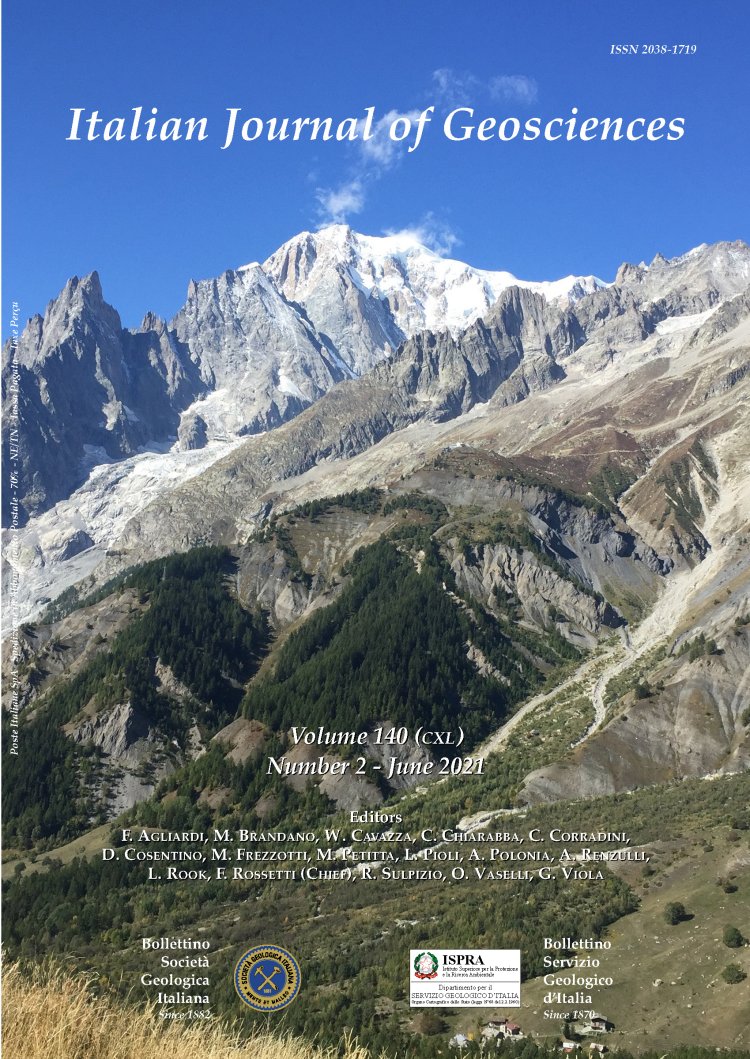
Structural investigation of background features and normal faults affecting the Calcari con Selce formation, Southern Apennines, Italy
Rocco Novellino (1), Francesco Bucci (2) & Enrico Tavarnelli (1)
(1) Dipartimento di Scienze Fisiche, della Terra dell’Ambiente, Università degli Studi di Siena (DSFTA-UNISI), Via Laterina 8, 53100 Siena, Italy.
(2) Consiglio Nazionale delle Ricerche, Istituto di Ricerca per la Protezione Idrogeologica, (IRPI-CNR), Via Madonna Alta 126, 06128 Perugia, Italy.
Corresponding author e-mail: francesco.bucci@irpi.cnr.it
Volume: 140 (2021) f.2
Pages: 237-254
Abstract
The Calcari con Selce formation (CSf) is a low-porosity multilayer carbonate, partially dolomitized, formation that extensively crops out in the Lucania Apennine chain. This lithostratigraphic succession represents to depth a key formation concerning hydrocarbon exploration and a potential confined acquifer system. In this work we describe the structural features affecting the CSf related to burial and tectonic deformation with emphasis on normal faults related to post-orogenic extensional deformation. A field investigation led to recognition of background structures such as: i) strata-bounded sub-vertical fracture sets (OBj) and bedding-parallel solution seams (BPss), related to lithostatic load; and: ii) oblique-to-bedding solution seams (BOss) induced by syn-orogenic flexural slip. Furthermore, different sets of dolomitic veins extensively affect dolomitized parts of the CSf showing structural relationships with bedding interfaces. Localized low-angle normal faults (LANFs) post-dating the previous structures formed further anisotropies locally associated with sub- vertical fracture sets (SVfs). These structures, enhancing permeability within carbonate beds, promoted fluid compartmentalization. High- angle normal faults and associate fracture sets, characterized by well-connected features, mainly localized along the mature fault zones, further enhanced the permeability of the CSf allowing the development of preferential fluid-flow pathways moving parallel to the fault-zones, as inferred from the structure of calcite veins. This work provides an enhanced characterization of the fracture network affecting the CSf and represents a useful tool aimed at improving hydrological models for fluid circulation within fractured reservoirs.
Keywords
Get Full Text